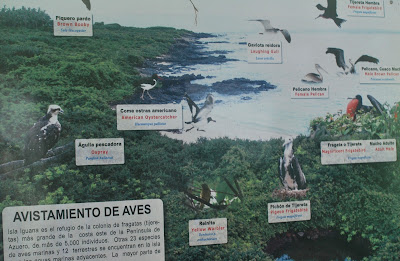Because a promise is a debt, as I told you in
a previous post, we had an extraordinaire day at the marshes east of Panama City a week ago, seeing/photographing eight (8) ducks species! Ok, it may not sound extraordinaire for some of you... but in Panama, this is simply a mind-blowing number of species. Not only variety... the numbers were impressive too, just check the next photo of one of the flocks of
Blue-winged Teals.
You see, here in Panamá, our bird list includes 16 species of ducks; one is considered extirpated (White-faced Whistling-Duck) while five others are considered vagrants (Comb Duck, Mallard, White-cheeked Pintail, Green-winged and Cinnamon Teals), leaving us with ten species with some kind of realistic (but not optimistic) chances to see in Panamá, since seven are considered rare to very rare, some with connotations like "local" and "irregular". Guess what, this season, all those ten species had been recorded, and personally I have seen nine already!

Did I mention the numbers? The above photo shows only a tiny fraction of the huge flock of
Black-bellied Whistling-Ducks in the site. This and the Blue-winged Teals are, by far, the commonest species in Panamá, the ones that we see more often, and both are well-known by the panamanians with names like "guichichi" and "salceta" respectively. From here, all the next species are considered rare, but you have to agree that if you have seen recently a flock of
more than 90 Lesser Scaups, then seeing a dozen or so that day was not unexpected.
Seeing Muscovy Ducks was not unexpected too. Considered rare, this species is also well-known by the locals (as Pato Real), and, away from Las Macans marsh in Herrera province (central Panama), is the second most often found resident species in Panama (second after the "guichichi"). We saw two females, with little white in the wings and no crests.
And talking about resident species, one of my personal highlight was the female-plumaged Masked Duck that we found (actually twice) in one of the first ponds. A little far for photos, the bird eventually flew (literally jumping out of the water), showing the white patches in the secondaries to land few feet away to "disappear" within a flock of other species. Curiously, in the way out, we found a dead bird in the street. This is only the second time I see this species, so I was really happy without knowing what else to expect.
OK, I was expecting at least one other species, a
Northern Shoveler, considering the growing number of reports for this season, including five that we
saw recently in Punta Chame, to the west of Panama City. And we found a single female among a group of
American Coots and Blue-winged Teals. Again, only a distant shot.
From here the things become serious! Among the hundreds of teals, we recognized larger birds resting with them. It became evident that the birds were American Wigeons when we saw an adult male, and then another, and another, and then two flying... WOW, I don't know how many, but to be conservative I annotated ten birds (surely an underestimation).
But ten American Wigeons is nothing compare to forty (40!) or more Northern Pintails!!! The last time I remember a report of this species in Panama was 14 years ago, and then only a pair was seen. The next photos shows different groups (and I could be underestimating the numbers again, check again the first photo in this post).
So you can imagine my surprise when we saw this flock? Not only that, this duck is elegant, beautiful, very rare and was a LIFER!!! What a crazy day!
























































